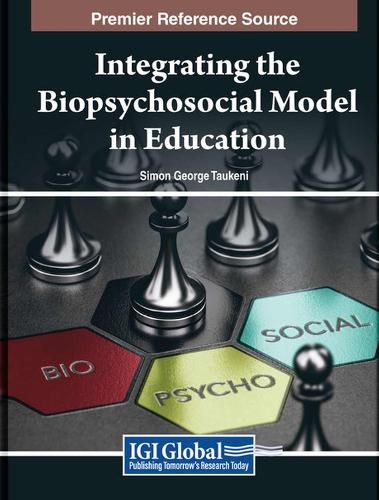Readings Newsletter
Become a Readings Member to make your shopping experience even easier.
Sign in or sign up for free!
You’re not far away from qualifying for FREE standard shipping within Australia
You’ve qualified for FREE standard shipping within Australia
The cart is loading…






This title is printed to order. This book may have been self-published. If so, we cannot guarantee the quality of the content. In the main most books will have gone through the editing process however some may not. We therefore suggest that you be aware of this before ordering this book. If in doubt check either the author or publisher’s details as we are unable to accept any returns unless they are faulty. Please contact us if you have any questions.
Amidst the evolving landscape of education, a persistent challenge arises: the need to foster inclusive learning environments that cater to the diverse needs of every student. Despite strides towards educational equity, barriers such as gender disparities, inequality, and inadequate support for students with varying abilities continue to impede progress. Recognizing this pressing issue, this book emerges as a timely solution poised to transform educational practices. By reframing education through the lens of the biopsychosocial model, Integrating the Biopsychosocial Model in Education offers a holistic approach that transcends traditional pedagogical boundaries. Through an exploration of biological, psychological, and social factors, educators are equipped with the tools to understand and address the complex needs of their students. From promoting good health and well-being to fostering inclusive classrooms, the biopsychosocial model serves as a guiding framework for achieving the Sustainable Development Goals (SDGs) and cultivating a more equitable educational landscape. Targeting a diverse audience ranging from university lecturers to school counselors and policymakers, this book serves as a catalyst for change. By advocating for the integration of this model into educational practices, the book paves the way for a more inclusive, supportive, and empowering learning environment. With its emphasis on contemporary educational paradigms and the imperative of addressing the holistic well-being of learners, this book stands as an indispensable resource for those committed to advancing educational equity and sustainability.
$9.00 standard shipping within Australia
FREE standard shipping within Australia for orders over $100.00
Express & International shipping calculated at checkout
This title is printed to order. This book may have been self-published. If so, we cannot guarantee the quality of the content. In the main most books will have gone through the editing process however some may not. We therefore suggest that you be aware of this before ordering this book. If in doubt check either the author or publisher’s details as we are unable to accept any returns unless they are faulty. Please contact us if you have any questions.
Amidst the evolving landscape of education, a persistent challenge arises: the need to foster inclusive learning environments that cater to the diverse needs of every student. Despite strides towards educational equity, barriers such as gender disparities, inequality, and inadequate support for students with varying abilities continue to impede progress. Recognizing this pressing issue, this book emerges as a timely solution poised to transform educational practices. By reframing education through the lens of the biopsychosocial model, Integrating the Biopsychosocial Model in Education offers a holistic approach that transcends traditional pedagogical boundaries. Through an exploration of biological, psychological, and social factors, educators are equipped with the tools to understand and address the complex needs of their students. From promoting good health and well-being to fostering inclusive classrooms, the biopsychosocial model serves as a guiding framework for achieving the Sustainable Development Goals (SDGs) and cultivating a more equitable educational landscape. Targeting a diverse audience ranging from university lecturers to school counselors and policymakers, this book serves as a catalyst for change. By advocating for the integration of this model into educational practices, the book paves the way for a more inclusive, supportive, and empowering learning environment. With its emphasis on contemporary educational paradigms and the imperative of addressing the holistic well-being of learners, this book stands as an indispensable resource for those committed to advancing educational equity and sustainability.